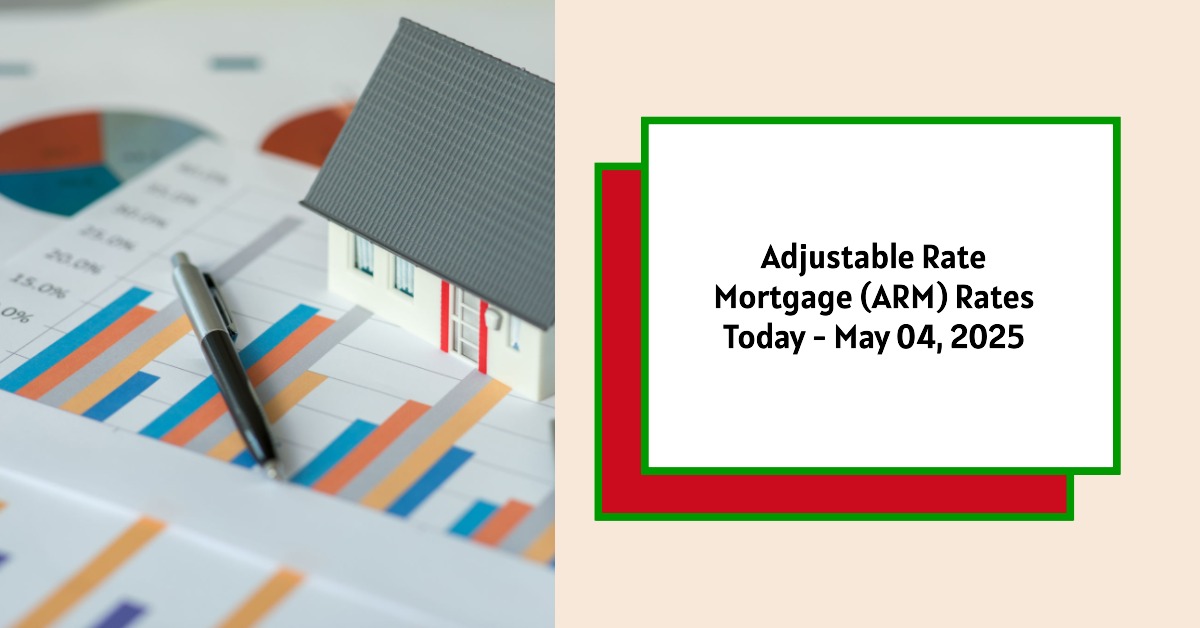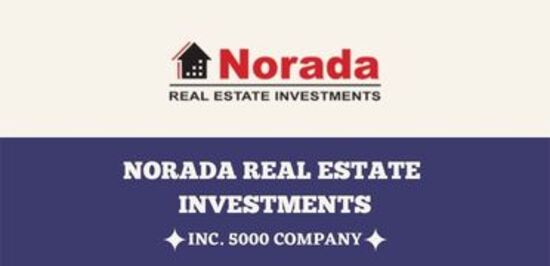Want to know about adjustable rate mortgage (ARM) rates today, May 04, 2025? Here's the scoop: The national average APR for a 5/1 ARM is currently 6.38%, while a 10/1 ARM sits at 6.56%. But that's just the average. Whether an ARM is a smart move for you depends on several things, including your financial situation, how long you plan to stay in the home, and your risk tolerance. Let's dive into the details to help you make an informed decision.
Adjustable Rate Mortgage (ARM) Rates Today – May 04, 2025: Is an ARM Right for You?
What's the Deal with ARMs?
Okay, let's break down ARMs in a way that's easy to understand. An Adjustable Rate Mortgage, or ARM, is a type of home loan where the interest rate is not fixed for the entire life of the loan. Instead, it starts with a fixed rate for a certain period, and then it can adjust based on market conditions.
Think of it like this: You get a special introductory rate for, say, five years. After that, the rate can go up or down, depending on what's happening with the economy.
As someone who's been following the housing market for a while, I can tell you that ARMs can be a tempting option, especially when fixed mortgage rates are high. The lower initial rate can make a big difference in your monthly payment.
A Snapshot of Today's ARM Rates (May 4, 2025)
Here's a quick overview of the national average ARM rates as of today (Bankrate):
- 5/1 ARM APR: 6.38%
- 10/1 ARM APR: 6.56%
To give you some context, let's compare these to other popular mortgage types:
| Product | Interest Rate | APR |
|---|---|---|
| 3/1 ARM Rate | 5.88% | 6.42% |
| 5/1 ARM Rate | 6.20% | 6.38% |
| 7/1 ARM Rate | 6.39% | 6.47% |
| 10/1 ARM Rate | 6.67% | 6.56% |
| 30-Year Fixed Rate | 6.78% | 6.85% |
| 15-Year Fixed Rate | 5.95% | 6.05% |
| 30-Year Fixed Rate FHA | 6.49% | 6.54% |
| 30-Year Fixed Rate VA | 6.53% | 6.58% |
| 30-Year Fixed Rate Jumbo | 6.80% | 6.85% |
Keep in mind that these are just averages. Your actual rate will depend on your credit score, down payment, and other factors.
Understanding ARM Loan Types: The Numbers Game
When you hear about ARMs, you'll often see them described with numbers like “5/1” or “7/6.” What do these mean?
- The first number indicates the length of the initial fixed-rate period in years.
- The second number indicates how often the interest rate adjusts after the fixed-rate period. A “1” means the rate adjusts annually, while a “6” means it adjusts every six months.
So, a 5/1 ARM has a fixed rate for the first five years, and then the rate adjusts once a year for the remainder of the loan term. Here's a quick rundown:
- 3/1 or 3/6 ARM: Fixed rate for 3 years, then adjusts annually or every 6 months.
- 5/1 or 5/6 ARM: Fixed rate for 5 years, then adjusts annually or every 6 months.
- 7/1 or 7/6 ARM: Fixed rate for 7 years, then adjusts annually or every 6 months.
- 10/1 or 10/6 ARM: Fixed rate for 10 years, then adjusts annually or every 6 months.
From my experience, 5/1 ARMs are often the most popular because they tend to offer the lowest initial interest rates.
Why Consider an ARM? The Pros and Cons
Let's weigh the potential benefits and drawbacks of choosing an ARM:
Pros:
- Lower Initial Payments: The main draw of an ARM is the lower interest rate during the fixed-rate period, which translates to lower monthly payments.
- Investment Opportunity: Those lower payments can free up cash to invest or use for other financial goals.
- Savings if You Move: If you plan to sell or refinance before the fixed-rate period ends, you could save a significant amount on interest.
Cons:
- Risk of Higher Rates: The big risk with ARMs is that interest rates could rise after the fixed-rate period, leading to higher monthly payments.
- Budgeting Challenges: The fluctuating interest rates can make it difficult to budget for the long term.
How to Snag the Best ARM Rate: A Step-by-Step Guide
If you're considering an ARM, here's how to get the best possible rate:
- Strengthen Your Finances: Improve your credit score. Aim for “very good” or higher. Lower your debt-to-income (DTI) ratio, and increase your down payment.
- Determine Your Budget: Figure out how much house you can realistically afford. Use an adjustable-rate calculator to estimate how your payments might change.
- Compare ARMs: Look at different ARM types (5/1, 7/1, 10/1) to see which one best suits your needs.
- Shop Around: Get quotes from at least three different lenders. Pay attention to the interest rate, fees, and rate cap structure.
ARM Loan Requirements: What You Need to Qualify
ARMs often have stricter requirements than fixed-rate mortgages because lenders need to ensure you can afford the loan even if the rate increases. Here are some typical requirements:
- Loan Amount: For a conforming ARM, the limit is generally \$806,500 in most areas in 2025. Jumbo ARMs (loans exceeding this limit) are available but may be harder to get.
- Credit and Income: A good credit score is essential for a competitive interest rate. Lenders will also look at your debt and income.
- Down Payment: Most conventional ARM loans require at least 5% down.
When Does an ARM Make Sense? Consider These Scenarios
So, when is an ARM a smart choice? Here are a few situations to consider:
- Lower APR: You can get a significantly lower APR on the ARM compared to a fixed-rate mortgage.
- Short-Term Homeownership: You plan to move or refinance before the initial fixed-rate period ends.
- Comfortable with Risk: You're comfortable with the possibility of rising interest rates and higher payments.
Personally, I wouldn't recommend an ARM to someone who's risk-averse or plans to stay in the home for the long haul. But if you're financially savvy and confident you can manage the potential risks, an ARM could be a good option.
ARMs and Rate Caps: Protection Against Skyrocketing Rates
A key feature of ARMs is the rate cap, which limits how much the interest rate can increase. There are usually two types of caps:
- Initial Adjustment Cap: This limits how much the rate can increase at the first adjustment after the fixed-rate period.
- Subsequent Adjustment Cap: This limits how much the rate can increase at each subsequent adjustment.
- Lifetime Cap: This limits the total amount the rate can increase over the life of the loan.
Understanding these caps is crucial. They provide a safety net, but it's still important to be prepared for potential rate increases.
Final Thoughts
Adjustable Rate Mortgages can be a powerful tool for homebuyers, but they're not without risk. Carefully consider your financial situation, risk tolerance, and long-term plans before deciding if an ARM is right for you. Do your research, compare offers from multiple lenders, and don't be afraid to ask questions.
Turnkey Real Estate Investment With Norada
Investing in real estate can help you secure consistent returns with fluctuating mortgage rates.
Despite softer demand, smart investors are locking in properties now while competition is lower and rental returns remain strong.
HOT NEW LISTINGS JUST ADDED!
Speak with an investment counselor (No Obligation):
(800) 611-3060
Also Read:
- Will Mortgage Rates Go Down in 2025: Morgan Stanley's Forecast
- Expect High Mortgage Rates Until 2026: Fannie Mae's 2-Year Forecast
- Mortgage Rate Predictions 2025 from 4 Leading Housing Experts
- Mortgage Rates Forecast for the Next 3 Years: 2025 to 2027
- 30-Year Mortgage Rate Forecast for the Next 5 Years
- 15-Year Mortgage Rate Forecast for the Next 5 Years
- Why Are Mortgage Rates Going Up in 2025: Will Rates Drop?
- Why Are Mortgage Rates So High and Predictions for 2025
- Will Mortgage Rates Ever Be 3% Again in the Future?
- Mortgage Rates Predictions for Next 2 Years
- Mortgage Rate Predictions for Next 5 Years
- Mortgage Rate Predictions: Why 2% and 3% Rates are Out of Reach
- How Lower Mortgage Rates Can Save You Thousands?
- How to Get a Low Mortgage Interest Rate?
- Will Mortgage Rates Ever Be 4% Again?



